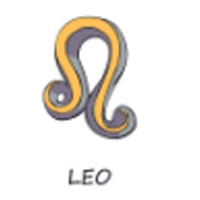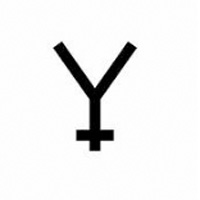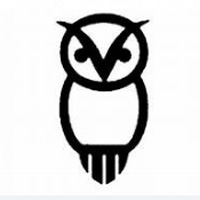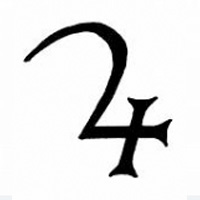author of the season - winter 2025 - 6
james adams
the curious incident of the bacon butty a broken tiller and a mid-life crisis
James Adams was born in Coventry and educated at King Henry VIII School, 1957-1968. His teenage years were marked by unenthusiastic school cross-country running and his enthusiastic support for Coventry City F.C. where he held a season-ticket for eight years.
After leaving Coventry he gained a BA at the University of Durham (American Studies & Theology) and an MA at the University of Bristol (Theology). He became an Anglican minister and served in a Church of England parish for three years. Thereafter, he went into teaching - firstly for Religious Studies but later retraining in the Social sciences, becoming Head of Religious and Social Studies - which comprised Psychology, Sociology and the Philosophy of Religion, all at ‘A’ level, in two sixth form centres over twenty years.
In 2021 he became a published author, with his psychological football memoir 'Attached to Coventry City' (Pitch Publishing) which was followed up in 2022 with 'Passionate - the Psychology of a Passionate Life' (Austin Macauley).

James Adams

Attached to Coventry City by James Adams

Passionate - the psychology of a passionate life - by James Adams
When not writing books James spends his time reading, trying to understand American politics, listening to popular music, supporting Coventry City, attending modern jive dances and keeping fit. He also enjoys travel both at home and abroad.
James has been married twice and has two children and three grand-children. The subject of greatest interest to him is Attachment Theory and how an understanding of this can contribute significantly to the development of positive mental health.
“The Curious Incident of the Bacon Sandwich, a Broken Tiller, and a Mid-life Crisis.”
 James Adams' new book brings to life two decades of his canal adventures from 1975-95 with youth groups and friends, aboard 30 traditional narrowboats, along 30 different canals and covering about 3,000 ‘lock-miles’ of Britain’s canal system.
James Adams' new book brings to life two decades of his canal adventures from 1975-95 with youth groups and friends, aboard 30 traditional narrowboats, along 30 different canals and covering about 3,000 ‘lock-miles’ of Britain’s canal system.
As well as describing the delights and dangers of boat-handling in fair weather and foul, he also reflects upon various issues and crises arising from his relationships with his crew, and within himself. Such reflections touch on practical, philosophical, theological and psychological issues, with humour not far from any dodgy lock or long, wet, tunnel.
Underneath all the youth-filled adventures however, is the author’s own search for the truth about himself, with his final destination being far from the original moorings from where he first cast off the ropes. At the end of the book are 15 chapter-related therapeutic exercises for those who want to search for their own truth about and within themselves.
So hop on board and start the engine, for canal cruise journeys and reflections that you are unlikely to forget!

In 1975 James was introduced to Britain’s canals, and for the next two decades he organised and led 21 summer canal cruises for youth groups and friends – from the Leeds and Liverpool canal in the Pennines to the Basingstoke canal in the south-east, and most points in between. The story of his adventures from 1975-95 are told in his new book “The Curious Incident of the Bacon Sandwich, a Broken Tiller, and a Mid-life Crisis.” [in preparation].
James' latest book is not yet available to buy, but you will be able to see an adaptation from chapter 8 'Sunshine and Shadows' here very shortly. His other books are available in Waterstones. James has his own website, and you can contact him by email







































 Some of these cave drawings are mentioned by the famous author Erich von Daniken who wrote the controversial book, The Chariots of the Gods, in the book he explains that he has travelled to every part of the world studying cave drawings and discovered that one single drawing showed a sign that was identical on all continents, the sign he was referring to is pointing to the sky with people bowing down as in the presence of a God descending from above, the question is, is this showing a higher force in the universe visiting the earth? According to von Daniken “ why would an African tribesman draw the same drawing as a cave dweller from Scandinavia, they have net met, yet draw the same image”, is this a sign that an alien craft visited?
Some of these cave drawings are mentioned by the famous author Erich von Daniken who wrote the controversial book, The Chariots of the Gods, in the book he explains that he has travelled to every part of the world studying cave drawings and discovered that one single drawing showed a sign that was identical on all continents, the sign he was referring to is pointing to the sky with people bowing down as in the presence of a God descending from above, the question is, is this showing a higher force in the universe visiting the earth? According to von Daniken “ why would an African tribesman draw the same drawing as a cave dweller from Scandinavia, they have net met, yet draw the same image”, is this a sign that an alien craft visited?













 For years explorers dug relentlessly to uncover various tombs across Egypt, only to be stumped when they came across the imagery that was laid out before them. Many believed that the drawings were some sort of curse and that they would suffer if they entered the space illegally.
For years explorers dug relentlessly to uncover various tombs across Egypt, only to be stumped when they came across the imagery that was laid out before them. Many believed that the drawings were some sort of curse and that they would suffer if they entered the space illegally.































 Hades' symbol is seen on many ancient military armies across the world, and apart from being known for the underworld connection, he is also known as the King of the Dead and wealth.
Hades' symbol is seen on many ancient military armies across the world, and apart from being known for the underworld connection, he is also known as the King of the Dead and wealth.








 Following the publication of All Boats Are Sinking (Summersdale Publishers), Hannah looks forward to taking on her next writing project, and intends to find inspiration through her imminent foray into a little-known thing called “motherhood”. She now lives in South London with one foot still firmly rooted on Argie – moored somewhere in the UK.
Following the publication of All Boats Are Sinking (Summersdale Publishers), Hannah looks forward to taking on her next writing project, and intends to find inspiration through her imminent foray into a little-known thing called “motherhood”. She now lives in South London with one foot still firmly rooted on Argie – moored somewhere in the UK.





